











Dryland Drought Tolerant Wild Flower Seed Mix
About...
Dryland Wildflower Seeds - Dryland wild flower seed mixture is made up of 24 individual species which are drought tolerant. These wildflowers are designed to flourish in the drier climates or areas that do not get moisture on a regular basis. The mix is made up of 50% annuals and 50% biennials/perennials.
MORE SPECIALTY WILDFLOWER MIXTURES OPTIONS
Planting Directions
TEMPERATURE
55+ F
SOWING RATE
1/4 lb per 625 - 1250 SF
AVERAGE GERM TIME
7 - 30 days
MOISTURE
Keep seeds moist until germination
DEPTH
1/4 inch or less
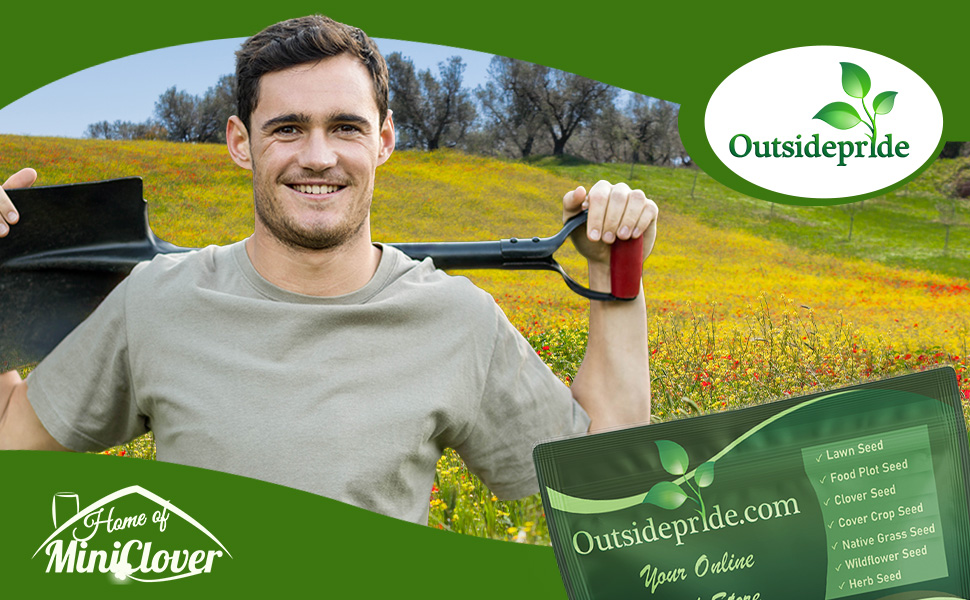
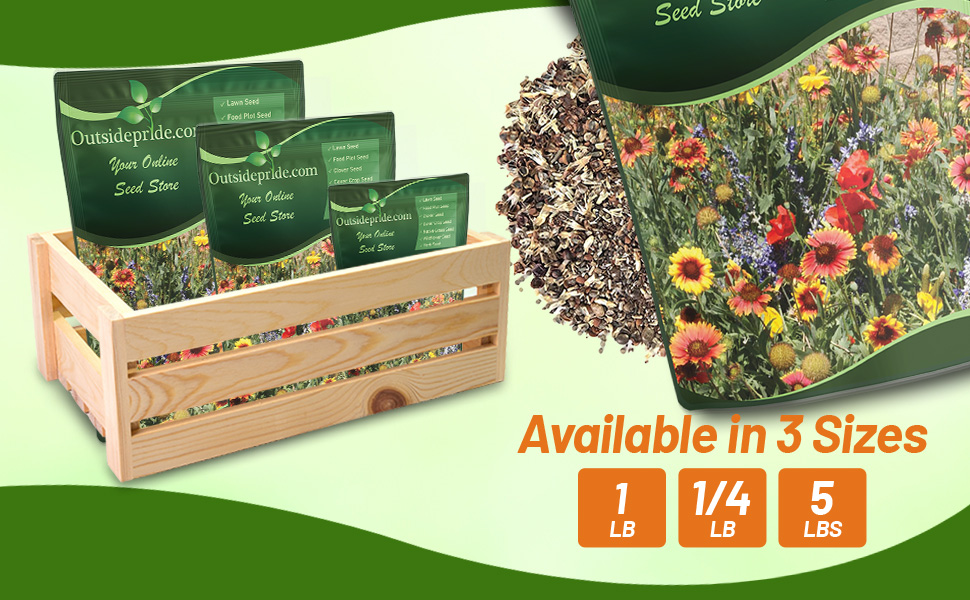
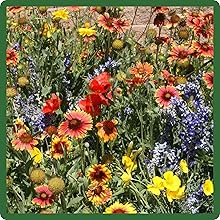
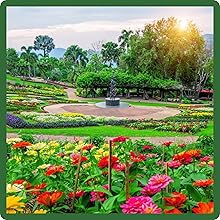
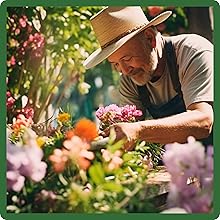
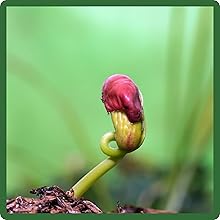
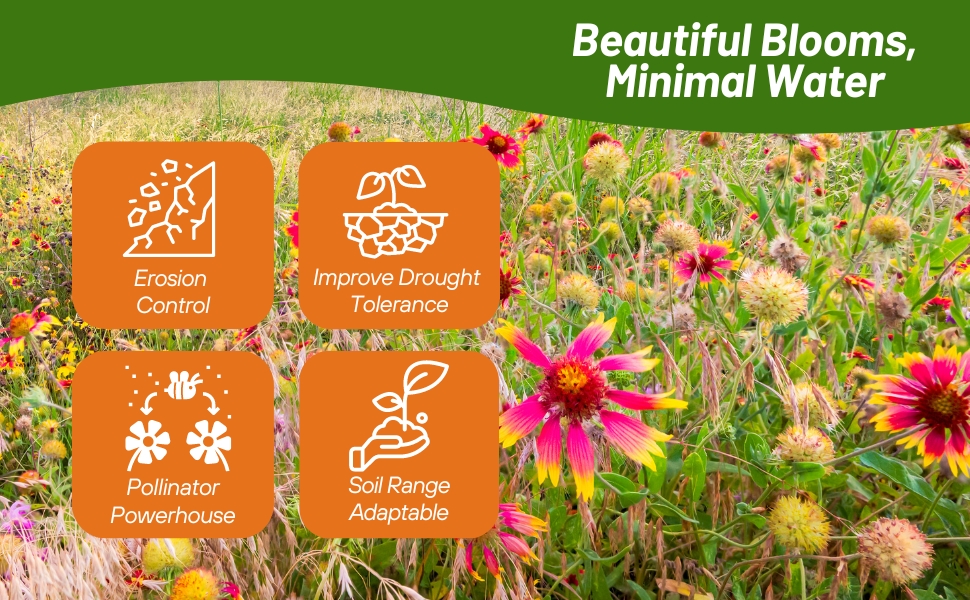
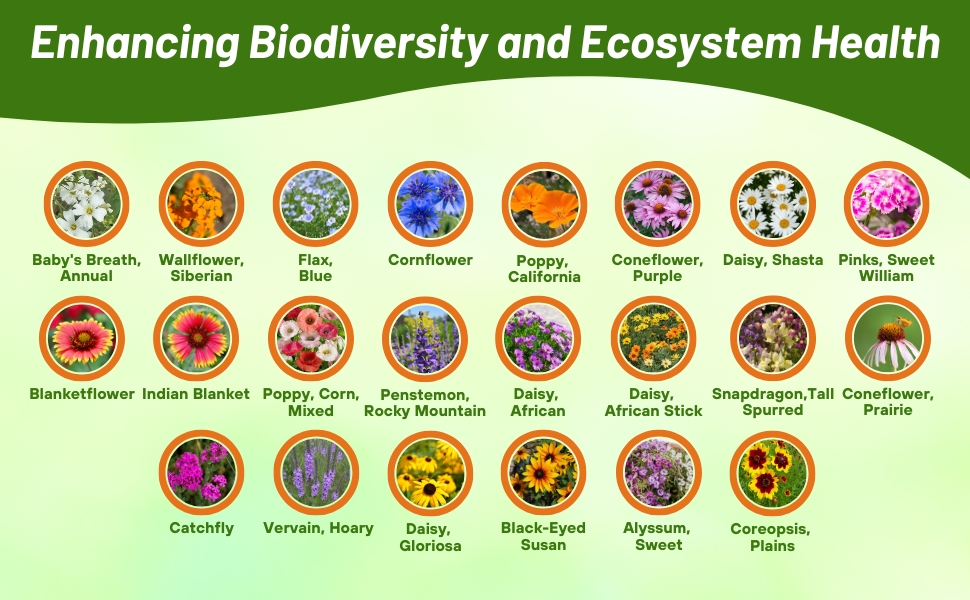
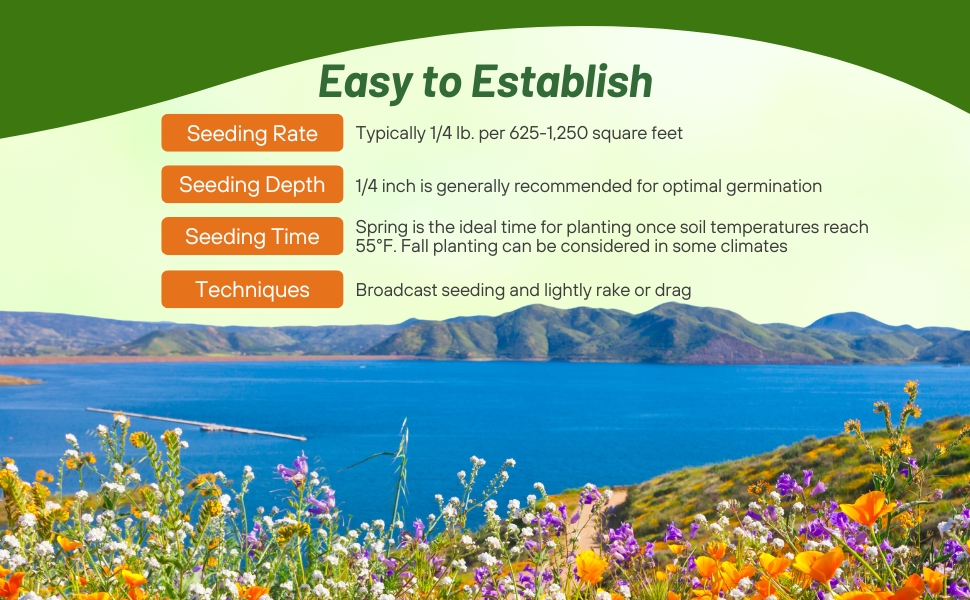
Dryland Wildflower Seeds - Dryland wild flower seed mixture is made up of 24 individual species which are drought tolerant. These wildflowers are designed to flourish in the drier climates or areas that do not get moisture on a regular basis. The mix is made up of 50% annuals and 50% biennials/perennials to give a wide variety of colorful flowers for the first season as well as following years. The wildflower bed will reach a height of 36 - 48 inches tall under normal conditions.
Wild flower seed mixture includes (percentages are rounded):
- 17.0% Baby's Breath, Annual
- 13.0% Wallflower, Siberian
- 9.0% Flax, Blue
- 8.0% Cornflower
- 8.0% Poppy, California
- 8.0% Coneflower, Purple
- 4.0% Daisy, Shasta
- 4.0% Pinks, Sweet William
- 4.0% Blanketflower
- 4.0% Indian Blanket
- 3.0% Poppy, Corn, Mixed
- 3.0% Penstemon, Rocky Mountain
- 2.0% Daisy, African
- 2.0% Daisy, African Stick
- 2.0% Snapdragon, Tall Spurred
- 2.0% Coneflower, Prairie
- 1.5% Catchfly
- 1.5% Vervain, Hoary
- 1.0% Daisy, Gloriosa
- 1.0% Black-Eyed Susan
- 1.0% Alyssum, Sweet
- 1.0% Coreopsis, Plains
Seeding rate: 1/4 LB Per 625 - 1,250 SF or 5 LBS 25,000 - 50,000 SF
Question: Why such a broad range on the seeding rate?
Answer: Wild flower seed planting applications vary tremendously from the back yard flower bed to the 5 acre meadow. Various seeding rates are needed depending on the type of application you are considering. For your specific application use this for your guideline:
- For a meadow look with scattered wildflowers using the lower end of the seeding rate
- For an average display with good coverage use the middle range of the seeding rate
- For a lush stand with almost solid wildflowers choose the upper end of the seeding rate
Planting Directions
TEMPERATURE
55+ F
SOWING RATE
1/4 lb per 625 SF to 1/4 lb per 1,250 SF
AVERAGE GERM TIME
7 - 30 days
MOISTURE
Keep seeds moist until germination
DEPTH
1/4 inch or less
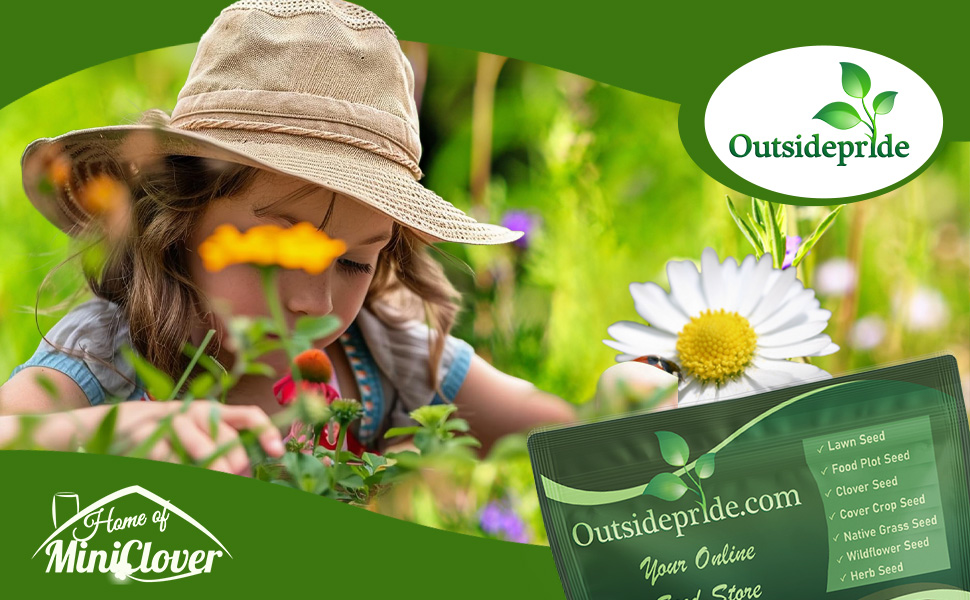
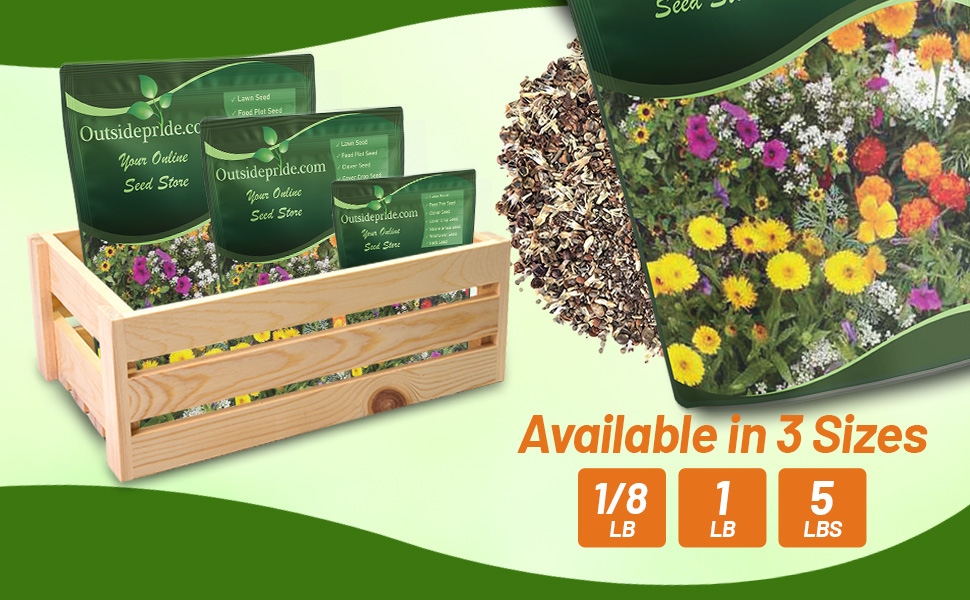
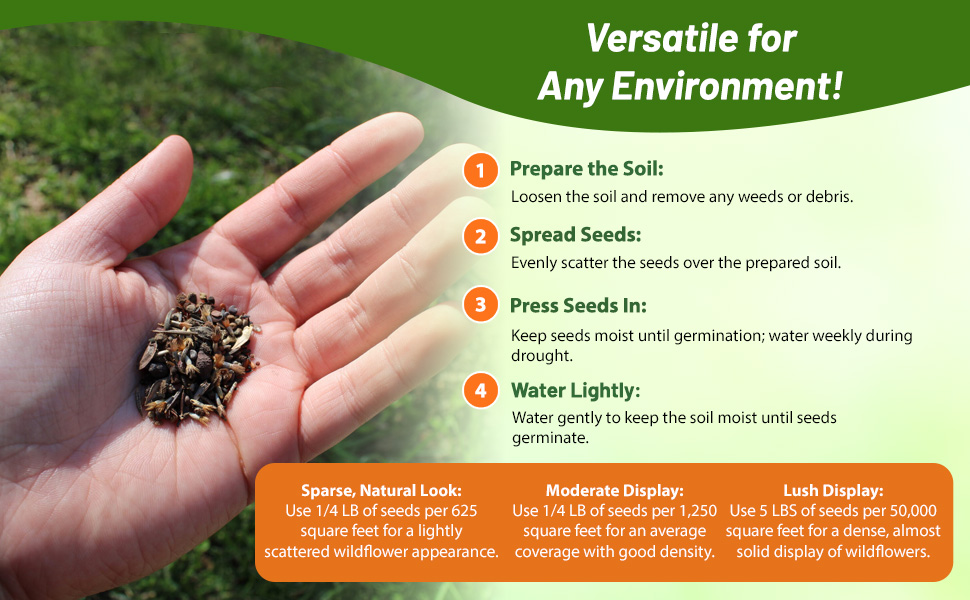
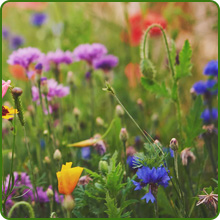
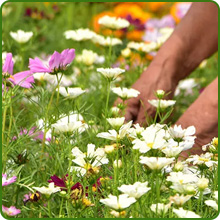
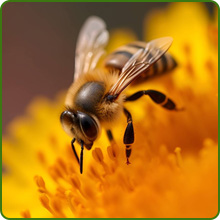
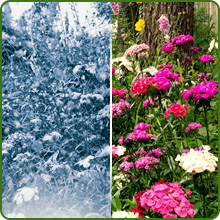
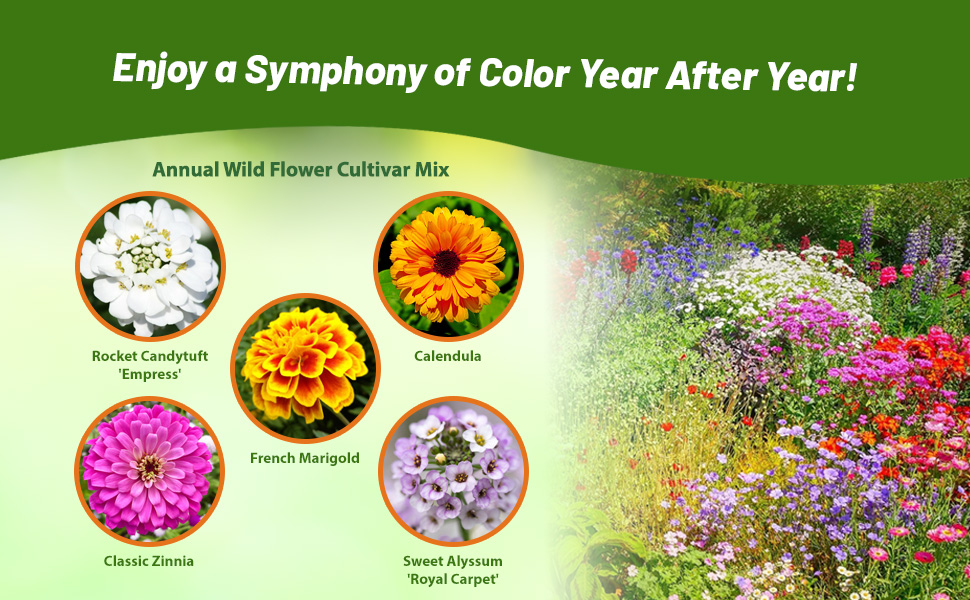
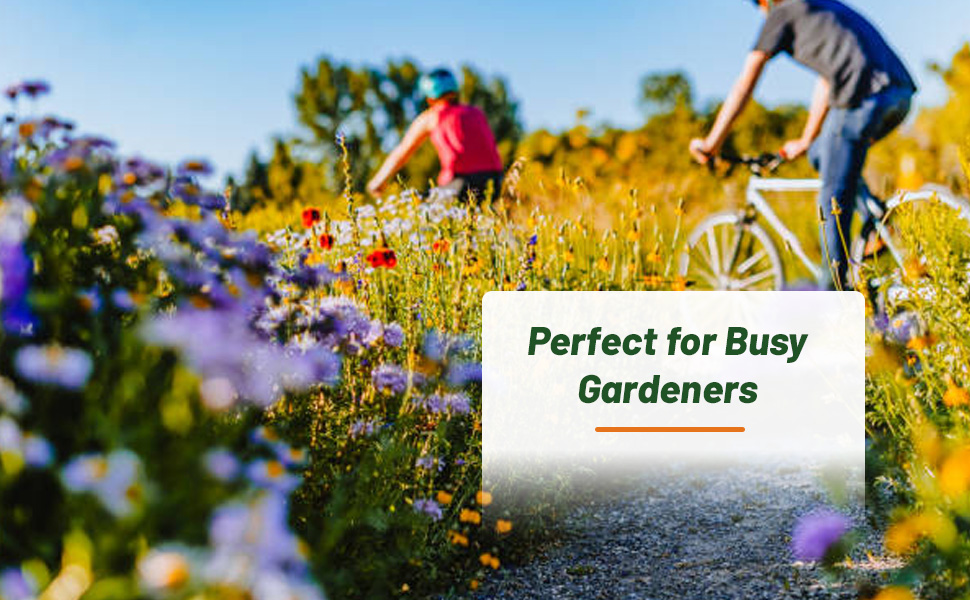
Short Annual Wild Flower Mix - Sow wild flower seeds to create this gorgeous look in your garden! Annual varieties in this mix have a spreading or mounding growth form which creates an even, 12 inch tall carpet of brilliant flowers in sunny hues. This Short Annual Wild Flower Mix includes cultivars such as Rocket Candytuft 'Empress', Calendula 'Gypsy Festival', Sweet Alyssum 'Royal Carpet', French Marigolds and Classic Zinnia. This low growing wild flower seed mix works well as an annual ground cover to create a beautiful flower bed.
Seeding Rate: 1/4 LB Per 625 - 1,250 SF or 5 LBS 25,000 - 50,000 SF.
Why such a broad range on the seeding rate? Wild flower seed planting applications vary tremendously from the back yard flower bed to the 5 acre meadow. Various seeding rates are needed depending on the type of application you are considering. For your specific application use this for your guideline:
- For a meadow look with scattered flowers using the lower end of the seeding rate
- For an average display with good coverage use the middle range of the seeding rate
- For a lush stand with almost solid flowers choose the upper end of the seeding rate
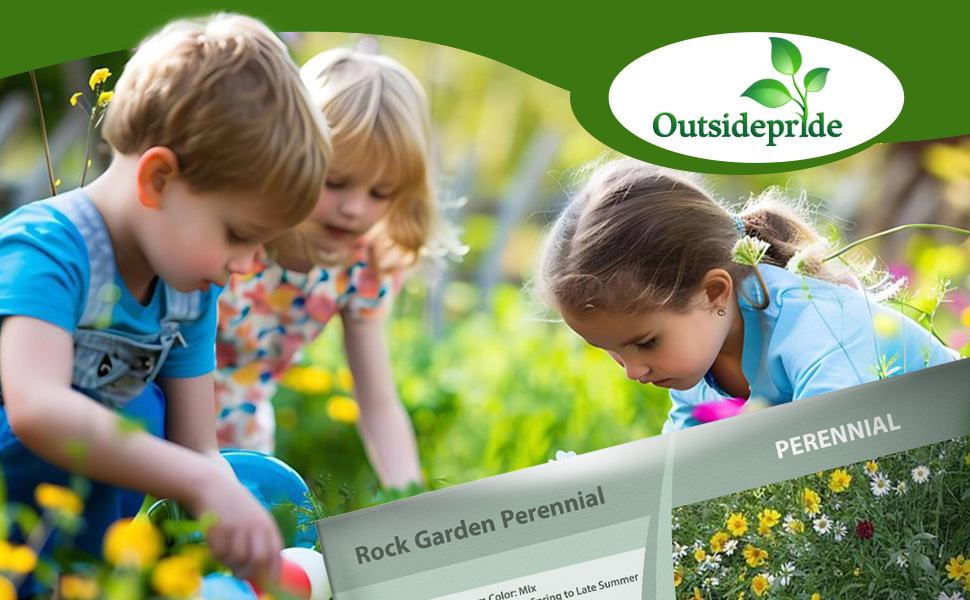
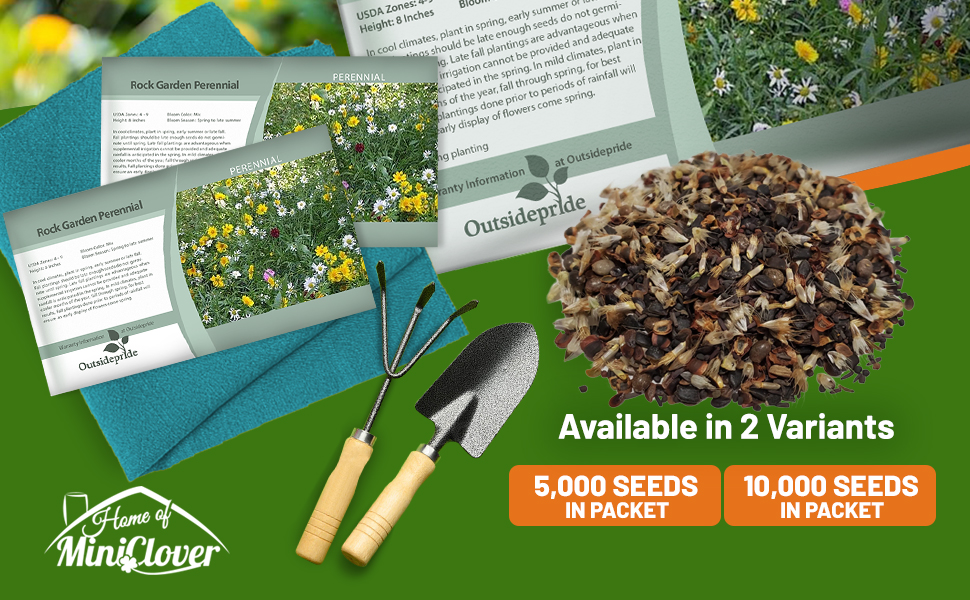
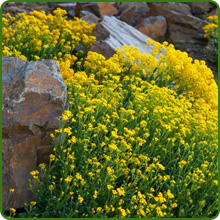
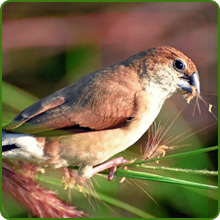
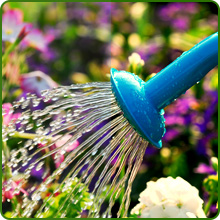
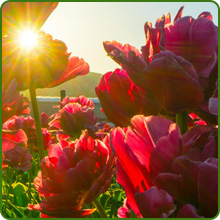
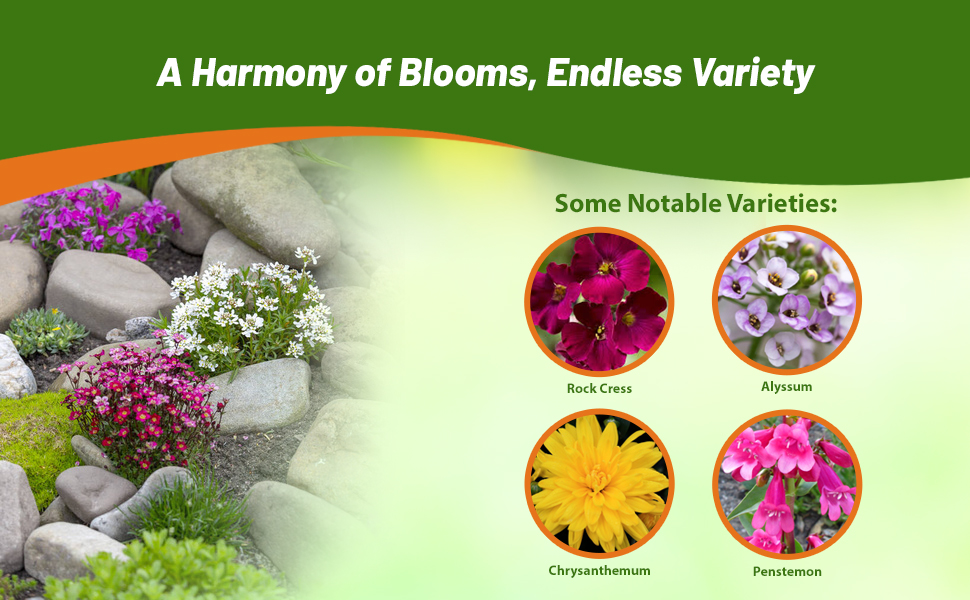
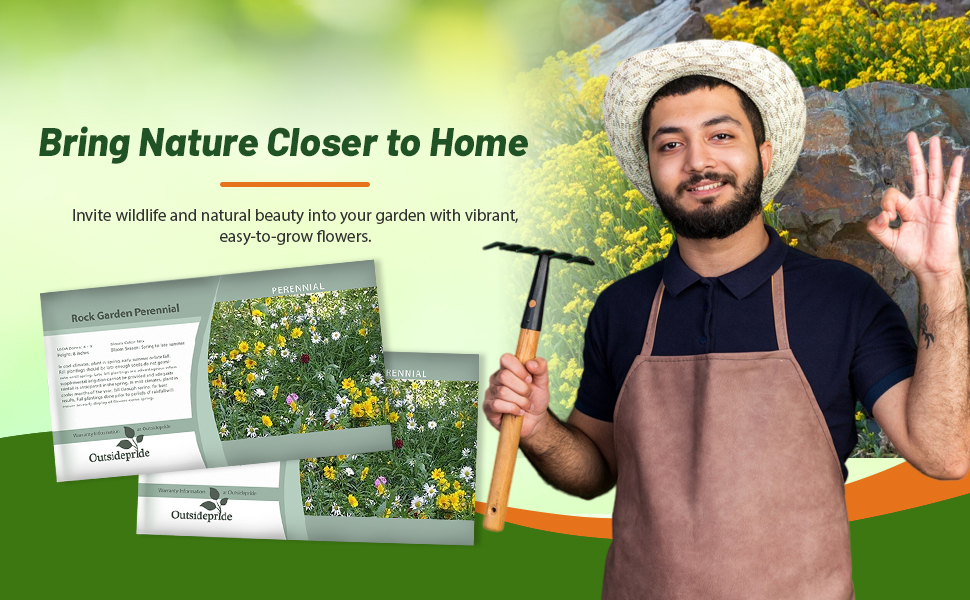
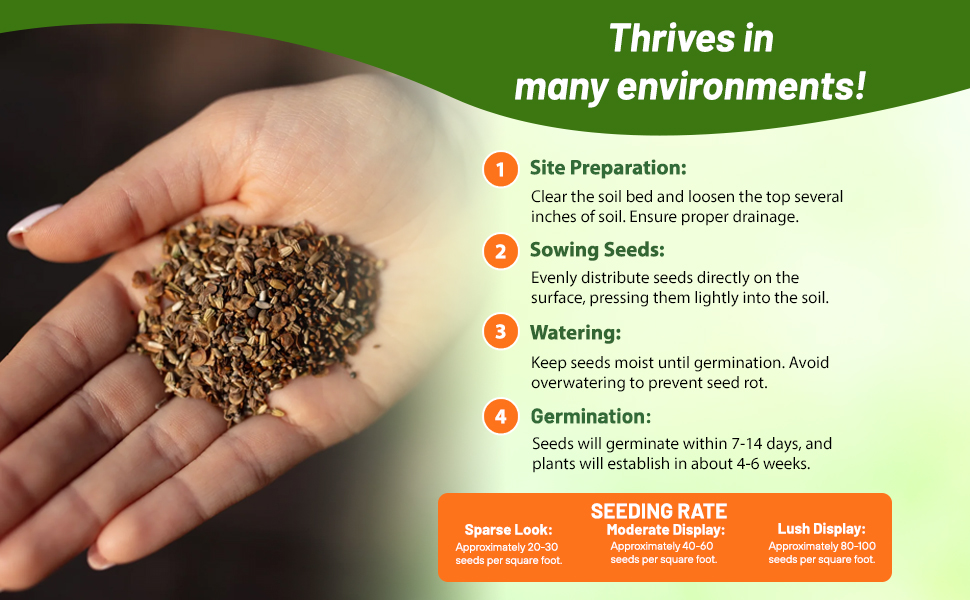
Rock Garden Perennials - This wild flower seed mixture contains perennial flowers that are perfect for the rock garden. These dwarf wildflowers only reach approximately 8 inches in height and have a long bloom season as the flower seed selection has different flowers blooming at different times. Perennial wildflowers come back year after year and do not need replanted.
Seeding Rate: 5,000 wild flower seeds covers approximately 150 square feet
Planting Directions
TEMPERATURE
55+ F
SOWING RATE
1/4 lb per 625 - 1250 SF
AVERAGE GERM TIME
7 - 30 days
MOISTURE
Keep seeds moist until germination
DEPTH
1/4 inch or less
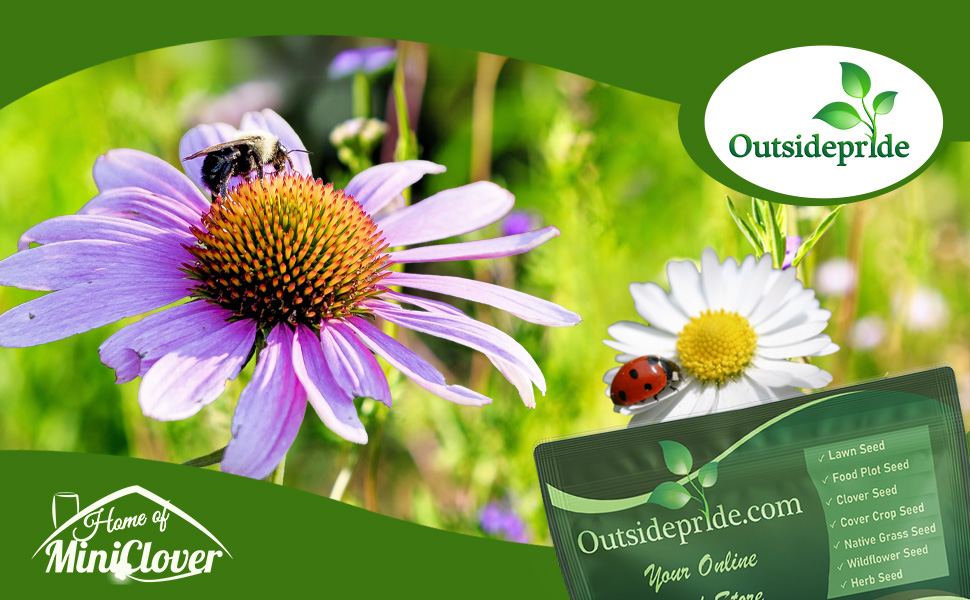
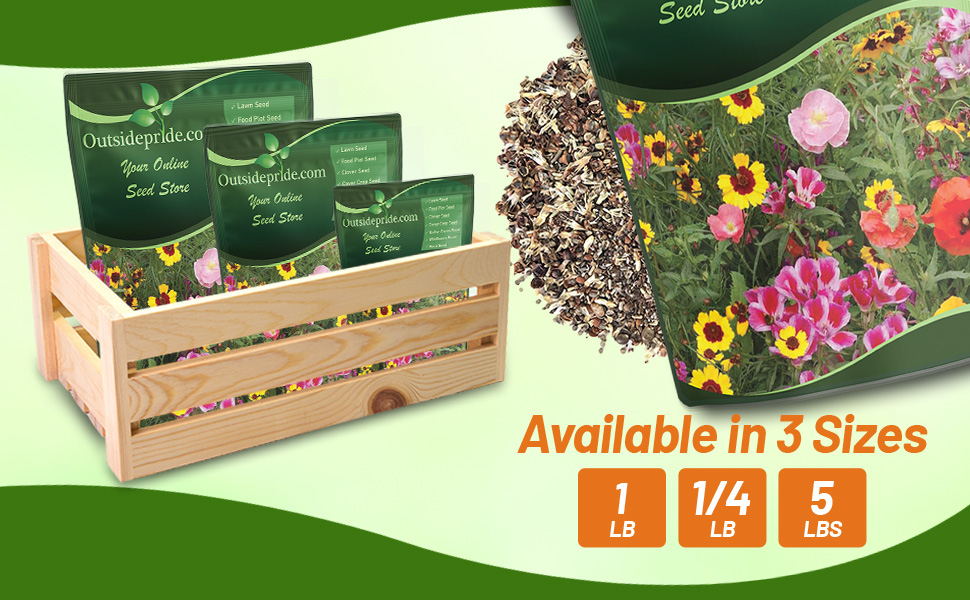
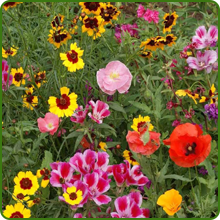
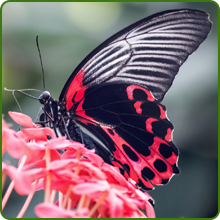
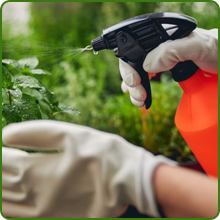
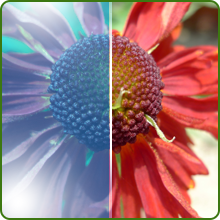
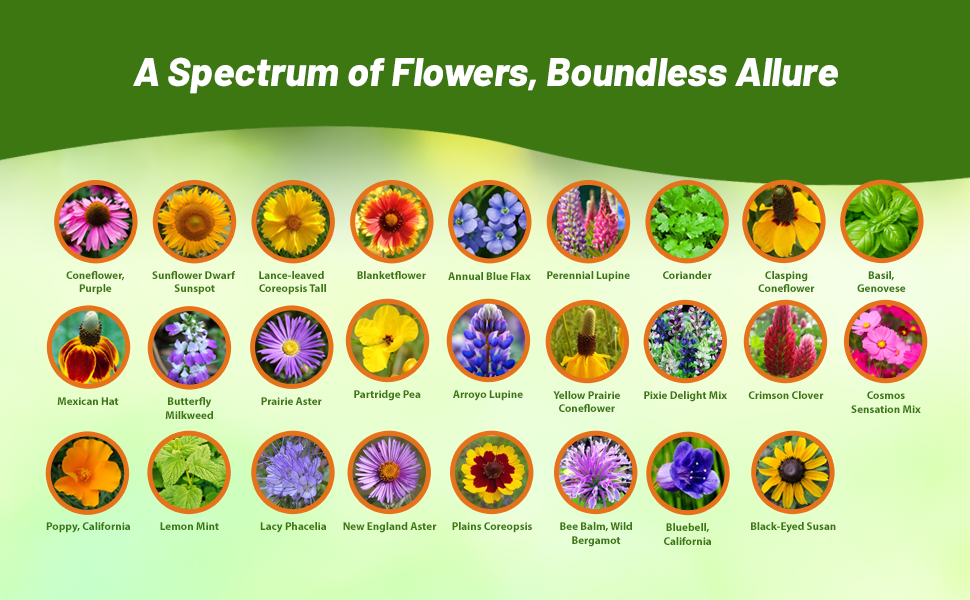
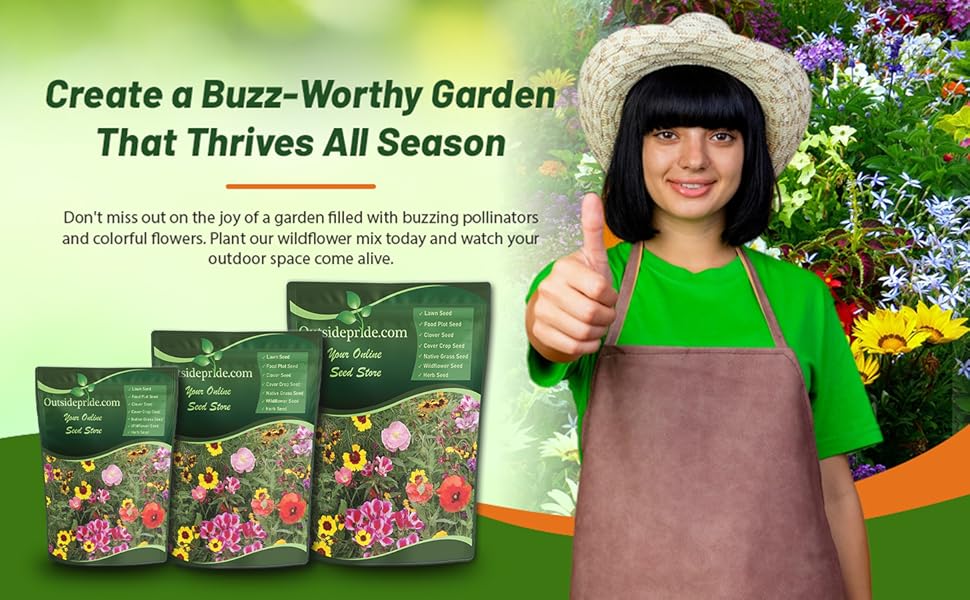
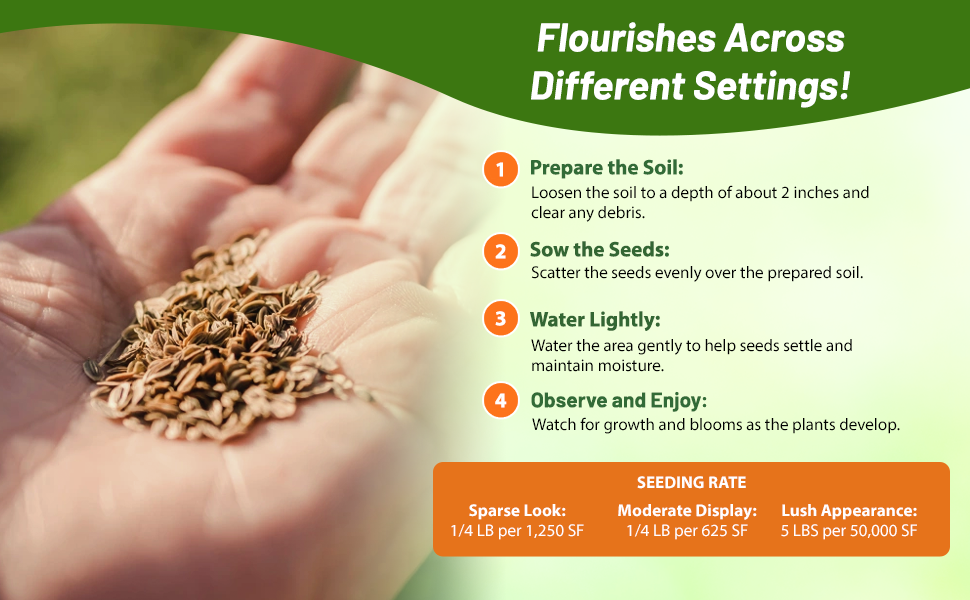
Pollinator Wildflower Seed - Pollinators are probably the first beneficial insect that we think of. Without pollinators, our food resources would be drastically reduced. Pollination is required to produce seeds and fruit in up to 80 percent of the world's flowering plants, including 2/3 of the world's food plants. It would be difficult to imagine our food choices without food plants!
Pollinator Wild flower seed mixture includes:
- 7% Blue Flax
- 6% Carousel Sunflower
- 6% Yellow Prairie Coneflower
- 6% Lance-leaved Coreopsis
- 5% Clasping Coneflower
- 5% Crimson Clover
- 5% Cosmos Sensation Mix
- 5% Pale Purple Coneflower
- 3% Teddy Bear Sunflower
- 3% Partridge Pea
- 3% Black-eyed Susan
- 3% Arroyo Lupine
- 3% Coriander
- 2% Dwarf Sunspot Sunflower
- 2% California Poppy
- 2% Perennial Lupine
- 2% California Bluebell
- 2% Basil Genovese
- 2% Lacy Phacelia
- 2% Dwarf Lupine Pixie Delight
- 2% Zinnia California Giant
- 2% Lemon Bee Balm
- 1% New England Aster
- 1% Plains Coreopsis
- 1% Wild Bergamot
- 1% Butterfly Milkweed
- 1% Prairie Aster
Seeding rate: 1/4 LB Per 625 - 1,250 SF or 5 LBS 25,000 - 50,000 SF.
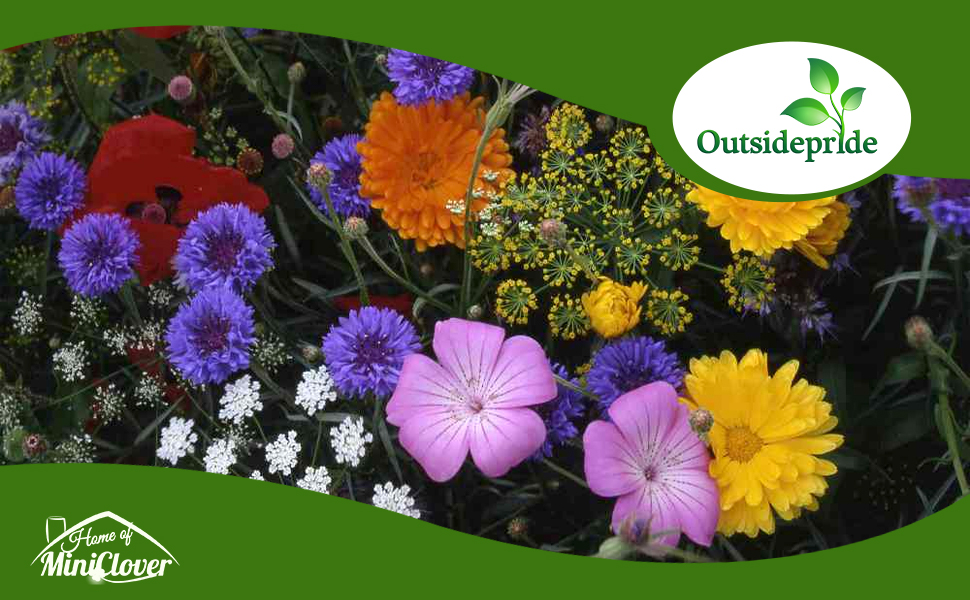
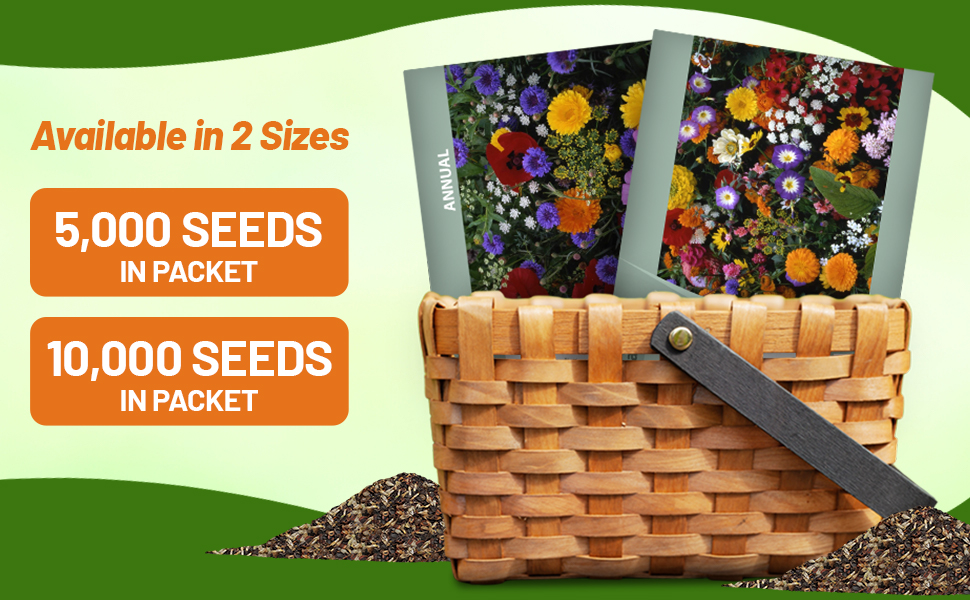
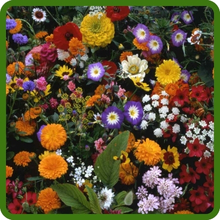
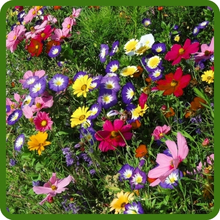
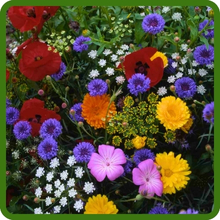
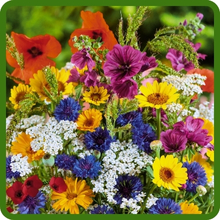
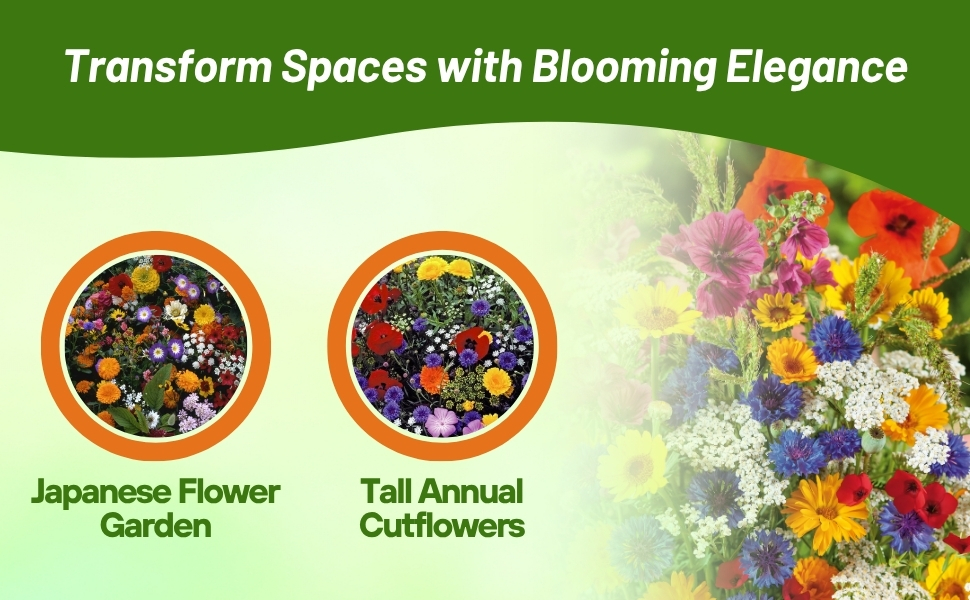
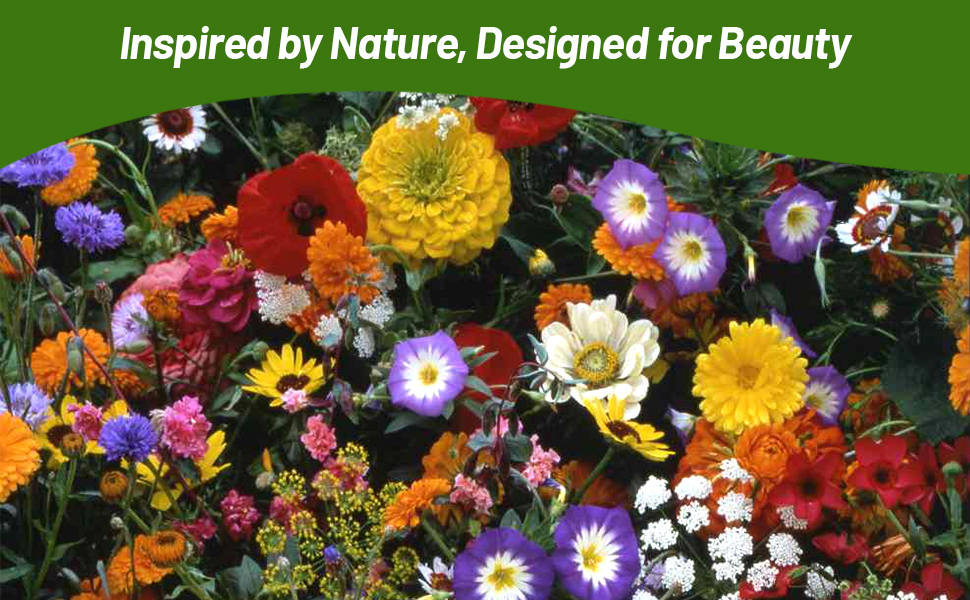
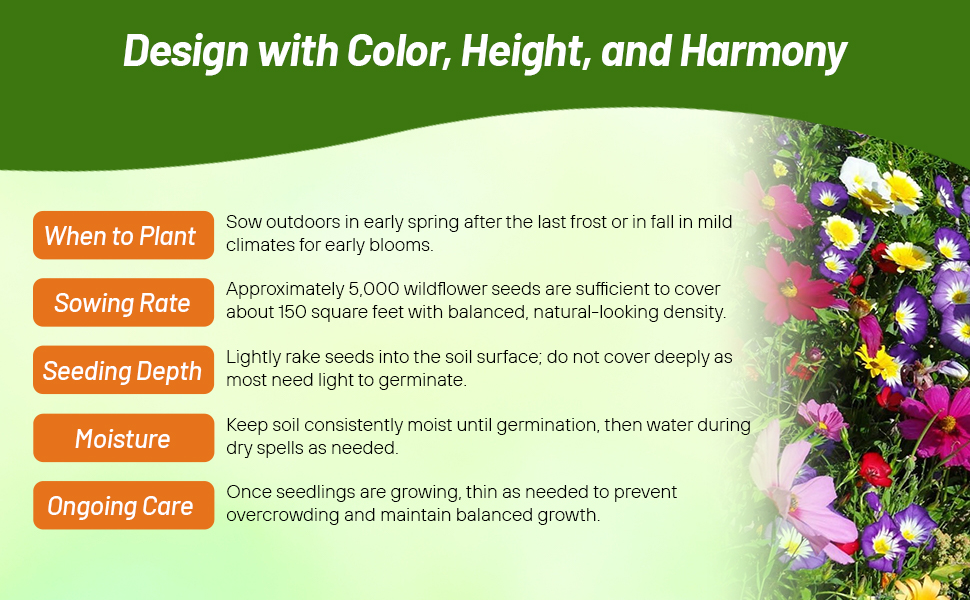
Tall Annual Cutflowers - If you want a wildflower seed to germinate quickly, establish in no time, and bloom within a few months, look no further then this tall annual cutflower mix of wildflowers. Nice long stems make these the perfect flowers for cutting and putting in to live flower bouquets. You can do subsequent plantings every month during the growing season so you can have an endless supply of flowers!
Seeding Rate: 5,000 wild flower seeds covers approximately 150 square feet
































